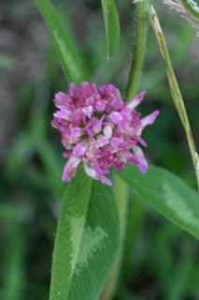My Four Favorite Edible Flowers
Last week I told you about the wonderful world of edible flowers and Charlotte has asked if I could pick some of my favorites and tell you about them.. I said ‘Of course I’d be delighted!!’ but what I didn’t bank on was the difficult task of ‘choosing’ the flowers to write about and then trying to fit a good deal of information into a mere 500 words!!!
My Favorite Four Edible Flowers
(Actually I love them all, so little space and so much to say:) check out the full guide to Edible Flowers on my site: http://2womenon2acres.com)
1) Pea Blossoms. (Pisum species) – Edible garden peas bloom mostly in white, but may have other pale coloring. The blossoms are slightly sweet and crunchy and they taste like peas. The shoots and vine tendrils are edible, with a delicate, pea-like flavor. Remember though, that harvesting blooms will diminish your pea harvest, so you may want to plant extra. Pea blossoms, like peas are very nutritious, containing substantial amounts of Calcium, Vitamins A, B & C and they also contain TWICE the protein of other vegetables. The health benefits include cholesterol lowering properties which come from the nicotinic acid and their iron content is significant enough to help treat anaemia and fatigue. NOTE: Flowering ornamental sweet peas are poisonous.
2) Sage Flowers. (Salvia officinalis) – Not many think to use the flowers of sage, which are violet-blue, pink or white. The flowers have a ‘subtler’ sage taste than the leaves and can be used in salads and are a delicious companion to many foods including beans, corn dishes, sauteed or stuffed mushrooms, or pesto sauce. Sage is renowned for it’s anti-fungal, anti-bacterial, anti-oxidant and anti-inflammatory properties, sage is also good for relieving a wide range of digestive problems and the list could go on & on!! It’s the volatile oils that are present in sage that makes it such a varied healer.
3) Scented Geraniums. (Pelargonium species) – The scented flower flavor of geraniums generally corresponds to the variety. They come in fragrances from citrus and spice to fruits and flowers, and usually in colors of pinks and pastels. Sprinkle them over desserts, salads and in refreshing drinks. This beautiful flower has a range of soothing healing effects, which range from easing tension, calming anxiety, helps with menopausal and other menstrual conditions and even soothes tonsillitis. NOTE: Citronelle variety may not be edible please check your particular variety.
4) Calendula. (Calendula officinalis) More commonly know as ‘Pot’ Marigold. Calendula is an orange or yellow-colored flower and has a tendency to bloom once a month or every new moon. Taken orally calendula has been used to sooth stomach ulcers and inflammation. It has been reported to be effective in fighting fever, boils, abscesses, and recurrent vomiting. As a tea, it has been used for relieving conjunctivitis. Flavonoids, found in high amounts in calendula, are thought to account for much of its anti-inflammatory activity as well as medicinal effects.
Disclaimer:
Individuals consuming the flowers, plants, or derivatives listed here do so entirely at their own risk. The author cannot be held responsible for any adverse reaction to the flowers.
loading...
loading...

